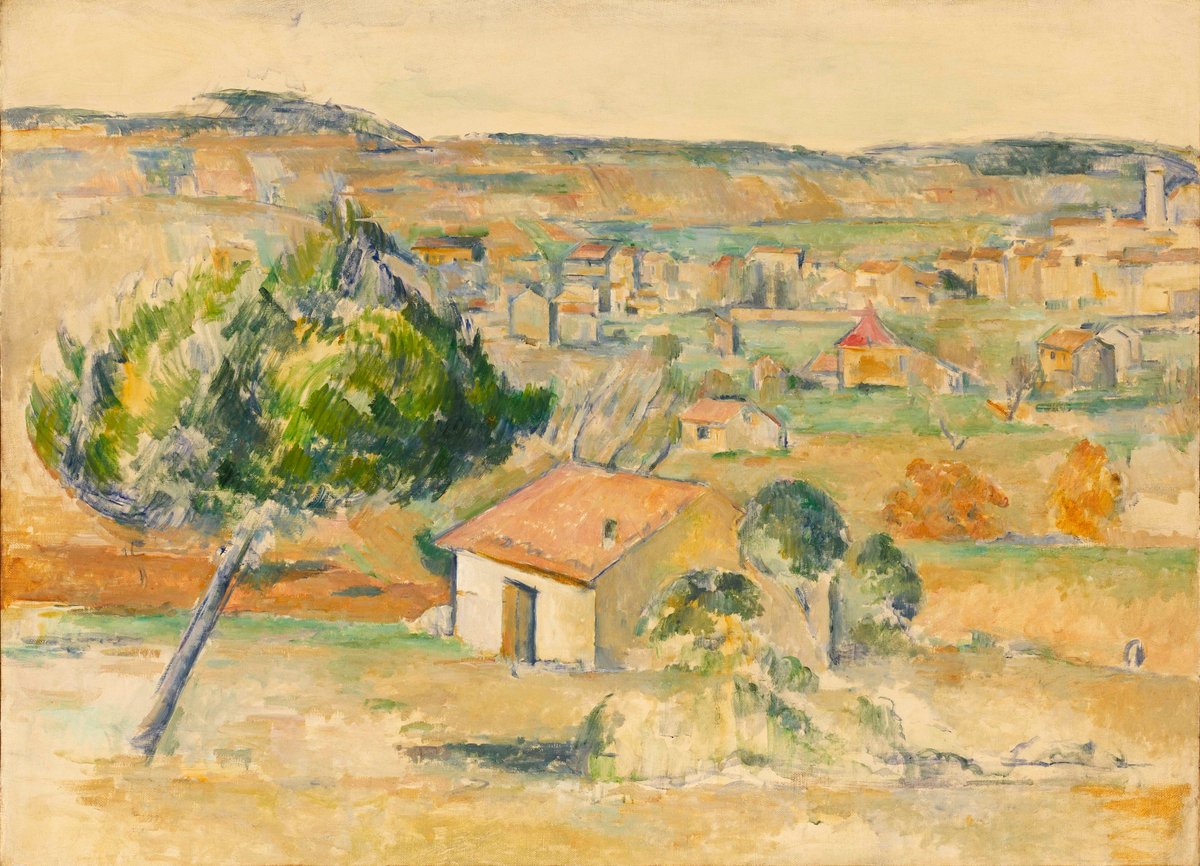Cézanne – Plaine provençale

Paul Cézanne, Plaine provençale, 1883–1885
Kunst Museum Winterthur, Hahnloser/Jaeggli Stiftung
Foto: Reto Pedrini, Zürich
The Hahnlosers acquired their first painting by Paul Cézanne towards the end of the First World War. Through Ambroise Vollard, the Parisian art dealer, they were able to purchase this Plaine provençale and a depiction of the Aqueduct of the Canal de Verdon, both of which were painted in the first half of the 1880s.
While the aqueduct is clearly identifiable, the location depicted in our painting remains unclear. This is hardly significant, as Cézanne was less interested in capturing a specific place than in more general themes. In his painting, the work is always subject to several influencing factors, of which the rendering of nature is only one. He was also always concerned with keeping the composition on the canvas in balance. He tried to structure and organise the pictorial structure – it was often said that he worked less like a painter and more like a bricklayer. Piece by piece, he assembled, stacked and built. Cézanne reduces the world to basic geometric shapes, to triangles and squares, which form the building blocks of his art.
In this case, he chose a relatively thin application of paint, which is almost transparent in places. This gives the work the character of a watercolour and, despite its formal rigour, gives it a certain lightness that seems entirely appropriate for the light of southern France.
The pine tree in the left middle ground introduces the picture. However, it is not so much intended to draw the viewer in, as would be the case in classical landscape painting, but rather to provide a prelude to the rhythm of the picture. The slanting position of the tree and its inherent opposing lines are repeated in the background in the houses and roofs until they run out towards the horizon in the increasingly smaller strokes. The staccato of the parallel hatching of the treetop foreshadows Cézanne's painting towards the end of the decade, when this stylistic device became increasingly important.
It was such innovations that made Cézanne a – if not the – father of modernism. His unconditional desire to arrange the pictorial structure harmoniously and aesthetically led him to abandon fidelity to nature occasionally. This marked a fundamental change that was to determine the art of the 20th century: How something is painted now became more important than what is painted. Welcome to modernism!


